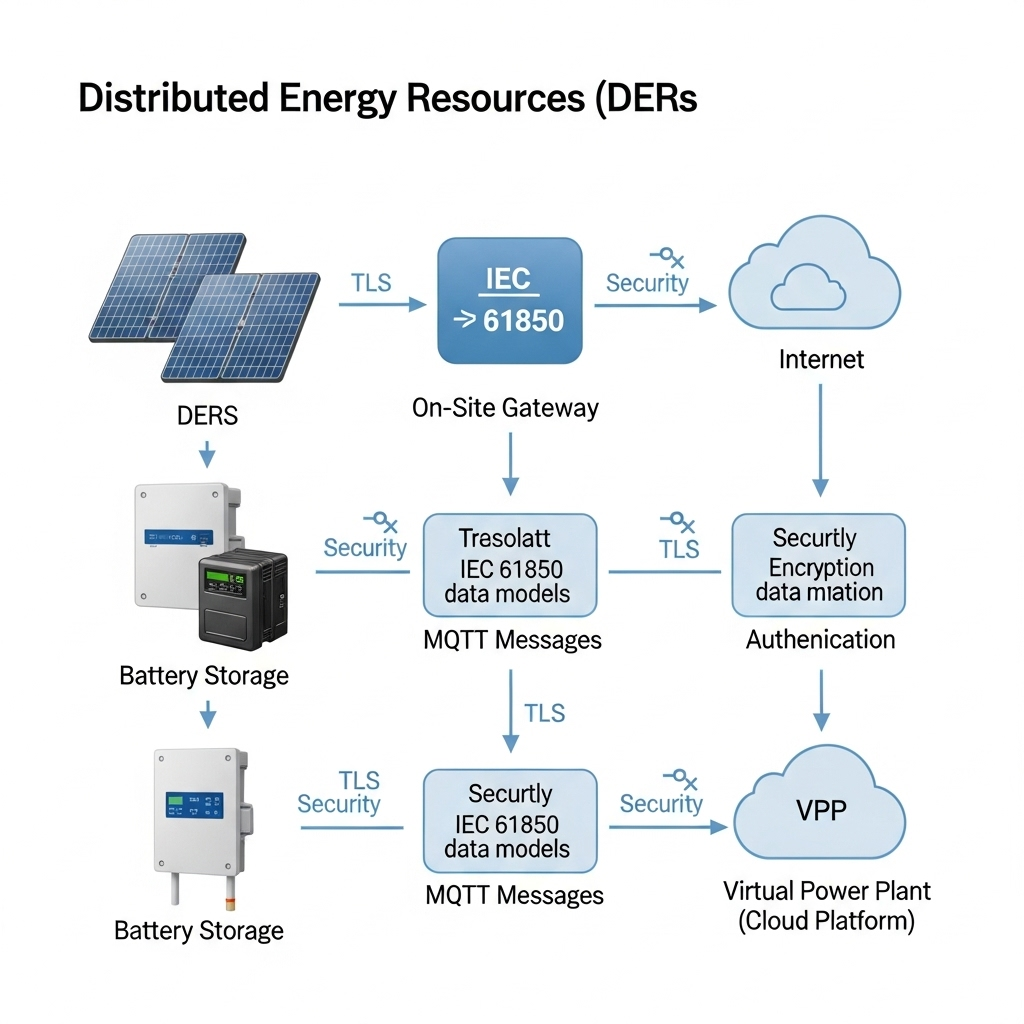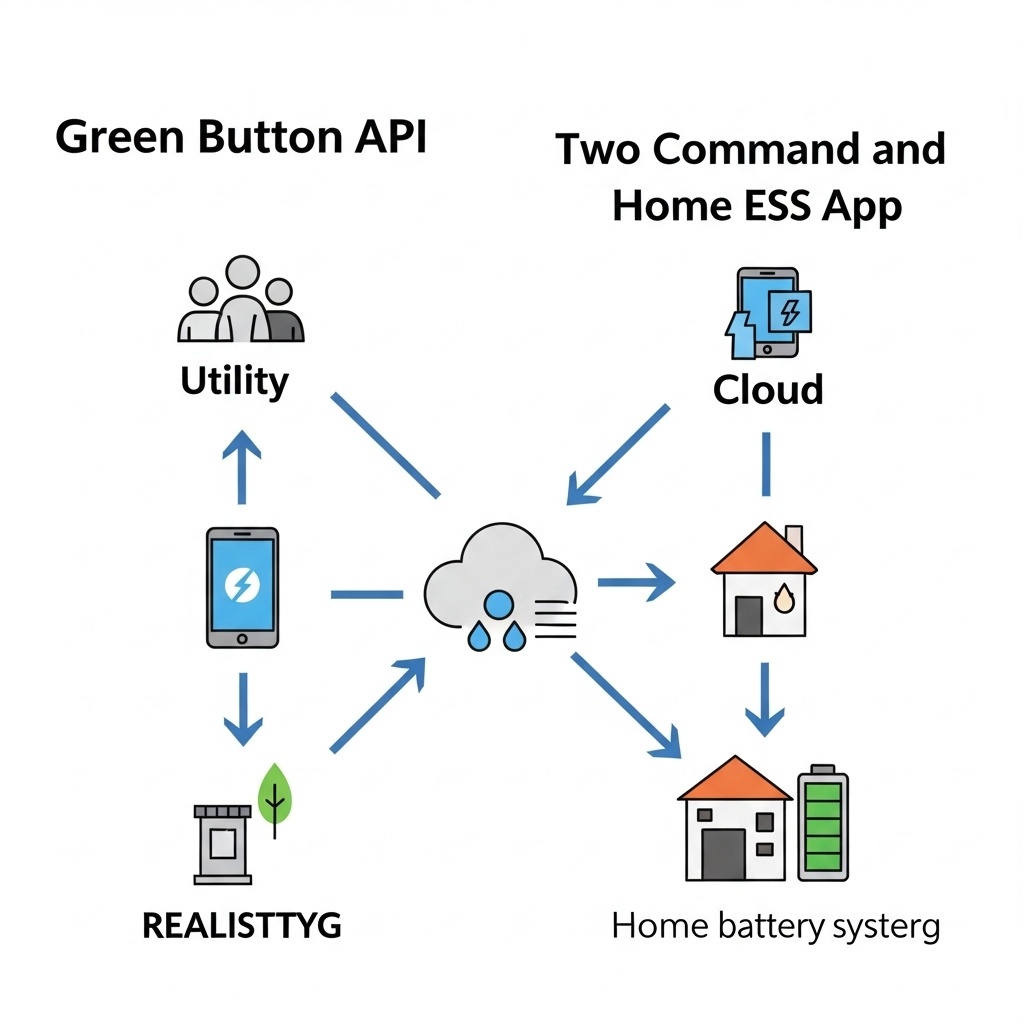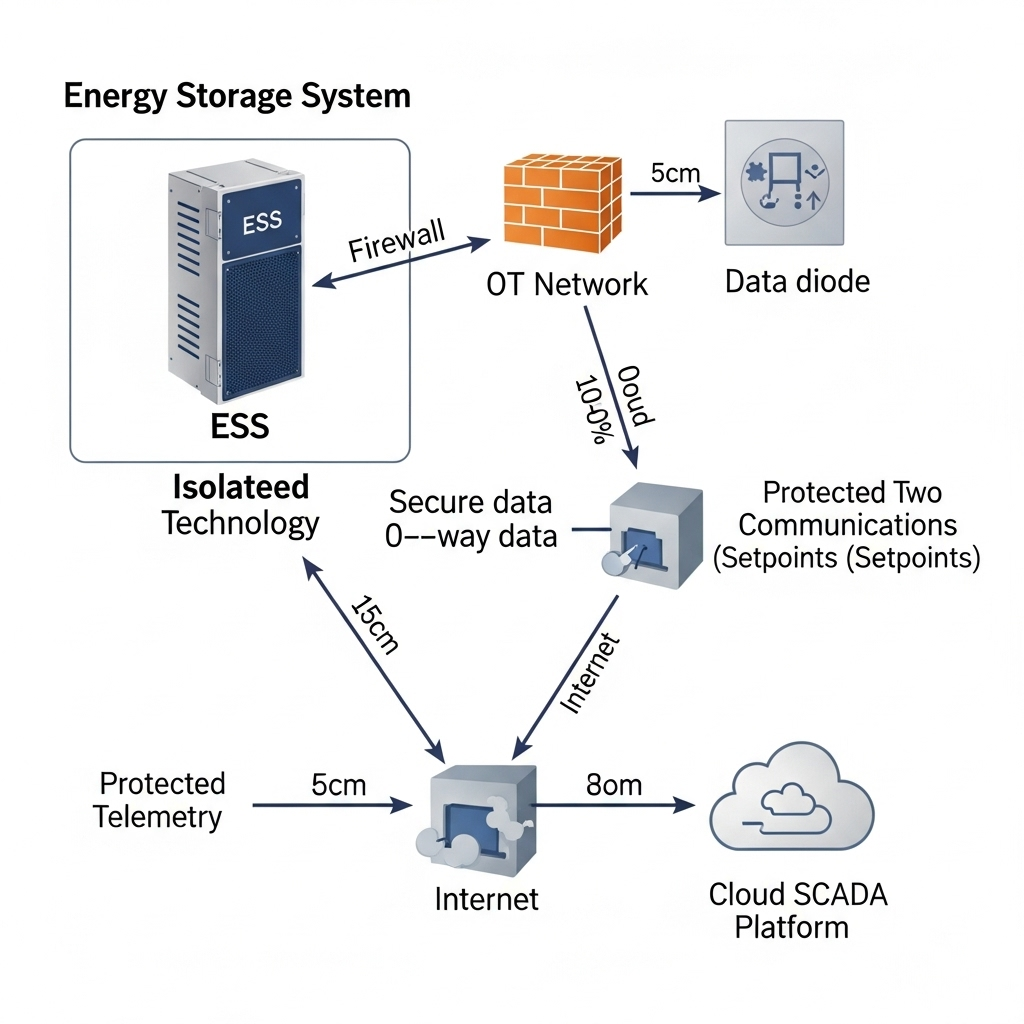Virtual Power Plants (VPPs) represent a significant shift in energy management, aggregating distributed energy resources (DERs) like solar inverters and energy storage systems (ESS) to operate as a single, cohesive power source. Yet, this aggregation introduces a major challenge: communication. Many devices use proprietary protocols, creating a complex, fragmented landscape that hinders scalability and opens security gaps. Adopting a vendor-agnostic communication pattern is the key to building a secure, flexible, and future-proof VPP.
The Challenge of VPP Communication Interoperability
The effectiveness of a VPP depends entirely on its ability to communicate reliably and securely with hundreds or thousands of individual assets. When each asset speaks a different digital language, the entire system becomes brittle and difficult to manage.
A Fragmented Protocol Landscape
Today’s DER market includes a wide array of communication protocols. While some devices use open standards like Modbus or DNP3, many rely on proprietary, closed-source APIs. This forces VPP operators to develop and maintain dozens of custom integrations. The result is increased development costs, prolonged deployment times, and a system that is difficult to troubleshoot and secure. This lack of standardization is a recognized hurdle. A report on Grid Codes for Renewable Powered Systems notes that harmonizing communication interfaces is a persistent challenge, making standardized protocols highly beneficial for system integration.
Why a Vendor-Agnostic Approach is Critical
A vendor-agnostic strategy frees you from dependency on a single manufacturer's ecosystem. It allows you to select the best-in-class inverters, batteries, and control systems based on performance and cost, not just their ability to communicate with your existing platform. This flexibility is crucial for long-term scalability. As your VPP grows, you can seamlessly integrate new assets from different vendors without costly and time-consuming custom development. This approach ensures your VPP remains adaptable and economically viable over its entire lifecycle.
Security Risks in Proprietary Systems
Proprietary communication systems often operate as 'black boxes.' This lack of transparency makes it difficult for independent security experts to audit them for vulnerabilities. Flaws can remain hidden for years, and patches or updates are entirely at the mercy of the vendor. A coordinated cyberattack targeting a specific vendor's proprietary protocol could compromise thousands of assets simultaneously, destabilizing the VPP and potentially the grid itself. Inverter communication cybersecurity cannot be an afterthought; it must be a foundational part of the system architecture.
IEC 61850 and MQTT: A Powerful Combination
To solve the interoperability and security puzzle, we can combine two powerful standards: IEC 61850 for its data-modeling capabilities and MQTT for its efficient data transport. This pairing creates a robust framework for secure VPP telemetry.
Understanding the IEC 61850 Data Model
IEC 61850 is more than just a communication protocol; it is a standardized way of describing energy assets. It provides a common language for devices in power automation systems. Instead of dealing with cryptic register maps, IEC 61850 uses logical nodes, data objects, and attributes to represent real-world functions. For example, an inverter can be represented by a `ZINV` logical node, with data objects for active power, reactive power, and operational state. This semantic model provides context to the data, making it universally understandable. As noted in an Innovation Outlook on Smart charging for electric vehicles, IEC 61850 is a key standard for defining communication in intelligent electrical substations and devices.
MQTT as a Lightweight Transport Layer
Message Queuing Telemetry Transport (MQTT) is a lightweight publish-subscribe messaging protocol designed for constrained devices and low-bandwidth networks. This makes it ideal for DER telemetry. In an MQTT system, devices (clients) publish messages to a central server (broker) on specific 'topics.' Other clients can subscribe to these topics to receive the messages. This decouples the data producer from the data consumer, creating a highly scalable and resilient communication architecture. Its efficiency is a major advantage for VPPs that manage thousands of endpoints, many over cellular or other metered connections.
The Synergy: Mapping IEC 61850 to MQTT
The real power comes from combining these two standards. IEC 61850 provides the *what*—a standardized, context-rich data model. MQTT provides the *how*—an efficient, scalable, and secure transport mechanism. The process involves mapping the IEC 61850 data objects to a structured MQTT topic namespace. For example, a power measurement from an inverter at a specific site could be published to the topic: `VPP/Site-42/Inverter-01/MMXU/TotW/mag/f`. This creates a stream of data that is not only efficiently transported but also self-describing and easy to parse by any subscribing application.
Architecting Secure Telemetry with IEC 61850/MQTT
A well-designed architecture is fundamental to achieving secure and reliable VPP operations. This pattern focuses on a gateway-mediated approach with layered security.
The Core Pattern: Gateway-Mediated Communication
In this model, an on-site gateway acts as the central communication hub for local DERs. This gateway communicates with inverters and ESS units using their native protocols (e.g., Modbus, CAN bus, or proprietary APIs). It then normalizes this information, translating it into the standardized IEC 61850 data model. Finally, the gateway publishes this structured data as MQTT messages to the VPP's cloud platform. This abstracts the complexity of individual device protocols, presenting a clean, uniform data stream to the VPP operator.
Layering Security with TLS and Authentication
Securing the communication channel is non-negotiable. The MQTT connection between the gateway and the cloud broker must be encrypted using Transport Layer Security (TLS), preferably version 1.3. This prevents eavesdropping and man-in-the-middle attacks. Beyond encryption, strong authentication is required. Each gateway should use a unique client certificate (part of a Public Key Infrastructure, or PKI) to authenticate itself to the broker. This ensures that only authorized devices can connect and publish data to your VPP.
Data Integrity and Access Control
The structured MQTT topic namespace enables granular access control. Using the broker's Access Control List (ACL) features, you can define precisely which clients can publish or subscribe to specific topics. For instance, a gateway for Site A can be restricted to only publish data to topics under `VPP/Site-A/...`. Similarly, a control application can be granted subscribe access to telemetry data but be denied publish access to command topics. This prevents a compromised device from affecting other parts of the system or an unauthorized user from issuing commands.
Practical Implementation and Benefits
Adopting this pattern provides tangible benefits in scalability, security, and operational efficiency. A phased approach can make the transition manageable.
A Phased Implementation Approach
You can begin by deploying this architecture in a pilot project with a small group of diverse assets. The first step is selecting a gateway device or software capable of multi-protocol translation and MQTT publishing. Next, define the specific IEC 61850 logical nodes and data objects relevant to your assets. Focusing on key metrics is crucial for success. A deep understanding of what to measure, as detailed in this ultimate reference for solar and storage performance, ensures your VPP receives valuable, actionable information from the start. Once the data model is defined and validated, you can scale the deployment across your entire fleet.
Performance and Scalability
This architecture is built for scale. A single MQTT broker can handle tens of thousands of concurrent connections with low latency. Because the data model is standardized, adding a new inverter or battery from a different manufacturer becomes a simple configuration task, not a complex software development project. This dramatically reduces the time and cost of expanding the VPP. According to IRENA, while standards like IEEE 1547-2018 list specific protocols, they also leave room for other protocols like IEC 61850 to be used, highlighting its growing acceptance and suitability for large-scale systems.
Comparing Communication Approaches
The advantages of an IEC 61850/MQTT pattern become clear when compared to traditional methods.
| Feature | Proprietary APIs | Modbus/DNP3 | IEC 61850 over MQTT |
|---|---|---|---|
| Interoperability | Low (Vendor-specific) | Medium (Requires mapping) | High (Standardized model) |
| Scalability | Low (High integration effort) | Medium (Polling can be heavy) | High (Publish/subscribe model) |
| Security | Variable (Often opaque) | Medium (Requires additional layers) | High (TLS, PKI, ACLs integrated) |
| Data Context | Low (Raw data) | Low (Register-based) | High (Semantic model) |
Building a Future-Proof VPP Foundation
Moving beyond the fragmented world of proprietary protocols is necessary for the VPP market to mature. The combination of the IEC 61850 semantic data model and the MQTT transport protocol provides a powerful, open, and secure pattern for VPP telemetry. This approach not only solves today's interoperability challenges but also creates a flexible foundation that can adapt to the energy landscape of tomorrow. By embracing standardization, VPP operators can build more resilient, scalable, and secure systems, unlocking the full potential of distributed energy.
Frequently Asked Questions
What is a Virtual Power Plant (VPP)?
A Virtual Power Plant is a cloud-based distributed power plant that aggregates the capacities of various Distributed Energy Resources (DERs) like residential solar panels, battery storage systems, and electric vehicles. It uses advanced software to manage these assets and deliver energy and grid services, operating much like a traditional power plant.
Is IEC 61850 a replacement for Modbus or DNP3?
Not directly. IEC 61850 provides a comprehensive data model and a suite of protocols, while Modbus and DNP3 are primarily communication protocols. In the pattern described, a gateway might use Modbus to talk to a local inverter but then translate that data into the IEC 61850 model for transmission to the VPP. IEC 61850 adds a layer of semantic meaning that Modbus registers lack.
Why not just use a cloud API with HTTPS?
While HTTPS provides secure point-to-point communication, it is not as efficient or scalable for real-time telemetry from thousands of devices as MQTT. MQTT's publish-subscribe model and low overhead are better suited for IoT environments. Combining it with the IEC 61850 data model creates a solution that is superior in terms of both performance and interoperability compared to a collection of disparate HTTPS-based APIs.
How does this pattern improve cybersecurity for inverter and ESS communication?
This pattern enhances security in several layers. First, it standardizes communication, making it easier to monitor and audit. Second, it mandates TLS encryption for data in transit. Third, it uses strong, certificate-based authentication to ensure only authorized devices can connect. Finally, it allows for granular access control via MQTT topics, limiting the potential impact of a compromised device.





Leave a comment
All comments are moderated before being published.
This site is protected by hCaptcha and the hCaptcha Privacy Policy and Terms of Service apply.